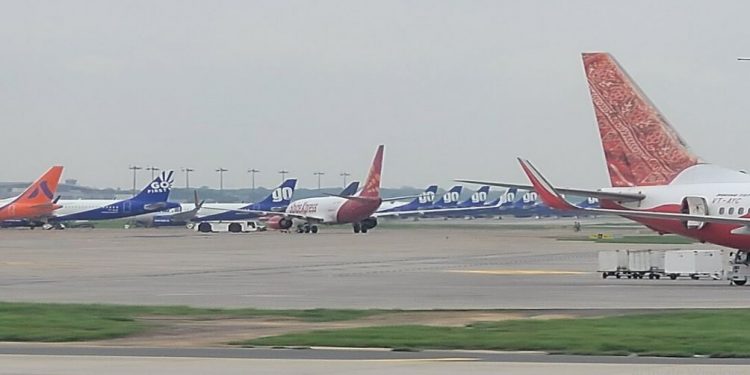New Delhi: The dual elevated Eastern Cross Taxiways and the fourth runway at the Delhi airport will be operational from July 13, which will enhance capacity amid growing air traffic, a senior official said Friday.
The Eastern Cross Taxiways (ECT), which is 2.1 kilometres long and can accommodate wide-body aircraft, will reduce the time spent on the tarmac by passengers after landing and before take-off of their flights.
It will also help in reducing aircraft emissions and enhance efficiency.
The Indira Gandhi International Airport (IGIA), which is also the country’s largest airport, currently has three operational runways and handles more than 1,500 aircraft movements every day.
With the fourth runway, eventually, the airport will have enhanced capacity to handle more aircraft movements.
GMR Group Deputy Managing Director I Prabhakara Rao Friday at a media briefing said the ECT and the fourth runway will be operational from July 13.
They will be inaugurated by Civil Aviation Minister Jyotiraditya Scindia.
“The fourth runway and the ECT are a firm part of enhancing capacity (of the airport) and aligning with airlines’ growth in the future. We are going to be future-ready for that growth,” Rao told PTI after the briefing.
Both the ECT and the fourth runway are becoming operational at a time when the country’s domestic air traffic is on an upward trajectory and some airlines have placed huge aircraft orders as part of massive expansion plans.
The ECT will connect the Northern and Southern airfields on the Eastern side of the airport, and will reduce the taxiing distance for an aircraft by seven kilometres. The distance an aircraft needs to cover after landing on the third runway and going to Terminal 1 (T1) will be reduced to two kilometres from 9 kilometres now.
“With the construction of the ECT, IGI Airport will become the only airport in India to have an elevated taxiway with roads passing below it,” a release said.
The dual-lane ECT can handle wide-body aircraft, including A-380 and B-777 and B-747.
Each lane is 44 metres wide with a gap of 47 metres between them to allow simultaneous passage of two aircraft.
IGIA is operated by the Delhi International Airport Ltd (DIAL), a consortium led by GMR Airports Infrastructure Ltd.
According to DIAL, the ECT is estimated to save around 350 kilograms of fuel every time an aircraft taxies through the runway from RWY 29R to Terminal 1 and vice versa.
“This translates into a reduction of nearly 1,114 kg of CO2 emissions for each aircraft taxiing along this route. On an annual basis, the ECT is estimated to reduce emissions of approximately 55,000 tonnes of CO2 from aircraft,” the release said.
Around 9,175 MT of fly ash has been used for the construction of the ECT.
IGIA has three terminals — T1, T2 and T3, and three runways — RW 09/27, RW 11R/29L and RWY 10/28. The fourth runway will be RW 11L/29R.
According to an official, once the fourth runway is operational, the third runway — RW 11R/29L will be closed for sometime for maintenance work.
The ECT along with the fourth runway and the new integrated Terminal 1 will make the airport future ready, it added.
DIAL aims to make IGIA a “net-zero carbon emission airport” by 2030.
PTI







































